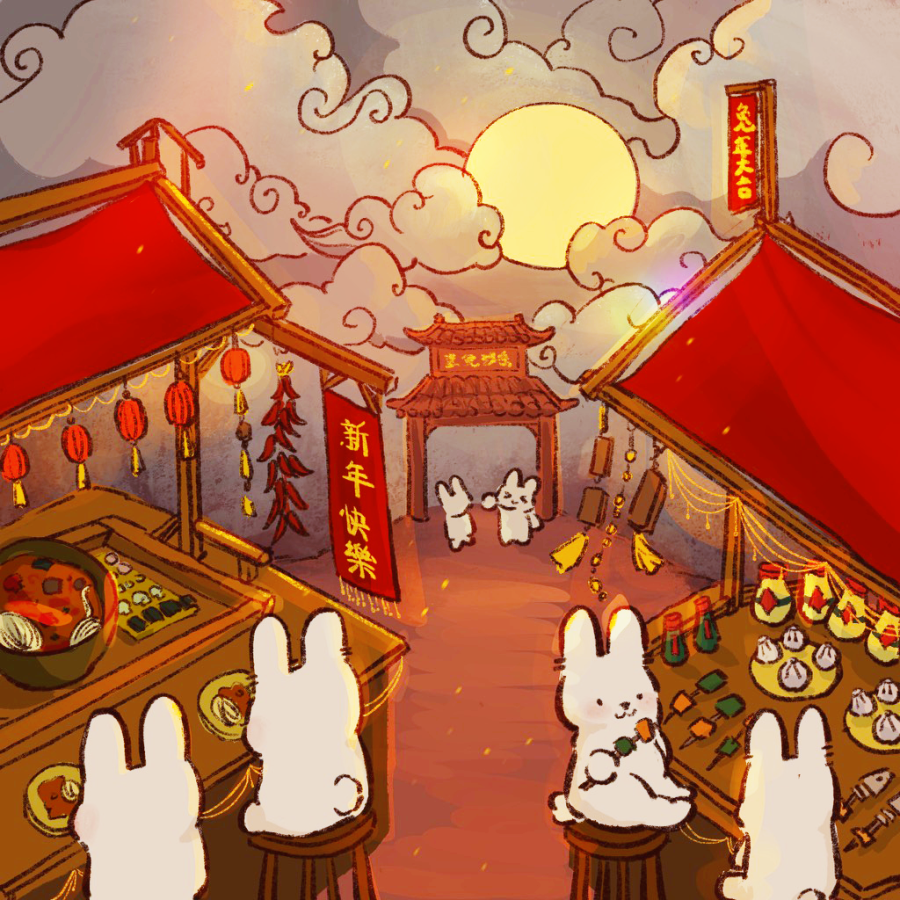Celebrating Lunar New Year
January 31, 2023
Lunar New Year, a holiday you may know from heart, or hear in passing, celebrates the first day of the lunar calendar. The term is often an umbrella for Chinese Chunjie, Korean Seollal, and Vietnamese Tet. The week leading up to the different celebrations can be one of the most important to many across the planet, including those with Asian heritage in the U.S.
Since the basis of Lunar New Year is the Chinese lunisolar calendar, it can be traced back hundreds of years to China. According to History, “Chinese New Year is thought to date back to the Shang Dynasty in the 14th century B.C. Under Emperor Wu of Han (140–87 B.C.) …. This holiday has ancient roots in China as an agricultural society. It was the occasion to celebrate the harvest and worship the gods and ask for good harvests in times to come.” The traditions have evolved since then into both collective and individual practices celebrated by IHS students. Sophomore Alynah Huang who is Vietnamese and Chinese, says, “Our family loves Lunar New Year. We love cooking and dressing up in traditional clothing for photos, and the kids love receiving Hong Bao, which are envelopes with money.” She associates it with memories of being together. Huang adds, “A good memory of this time is that my cousins and I would trade Pokémon cards as a pastime when we waited for the food to be ready.” Some students opt for a more simplistic experience. Senior Justin Lee says, “I believe that we celebrate significantly less than other Koreans, as we only eat a traditional soup known as rice cake soup every year.” Despite this, he still feels attached to the holiday. Lee shares, “I feel connected to Lunar New Year as it is a holiday that is unique to Asian cultures. A lot of aspects of Asian culture has been translated over and implemented into western culture, but I feel like Lunar New Year is one of the more sacred and untouched parts of it.” It is all about observing the way that works for the participant.
Celebrating with a community is an irresistible option for those who already participate and those who want to learn more about Lunar New Year. Lucky for us, Seattle planned events to expand your social circle! Seattle Chinatown-International District offers a food walk and dance performances on Feb. 24th, which will be a great immersive opportunity. Another annual event which is Vietnamese-specific to look out for is Tet in Seattle. I had the opportunity to see traditional singing and dancing, Vietnamese small businesses, and food booths in person. I can vouch that the atmosphere will bring exciting energy and a smile to your face.
With the increase of social media came the rise in interactions with Lunar New Year-related content. Many brands have since hopped on the train to create their own rendition of Lunar New Year products. The work that comes from this time of year can often be separated into two categories. At one end are newly designed works that take inspiration from the holiday, while at the other end are old products repackaged to capitalize on this important holiday. Freshman Bonnie Lai shares her general thoughts on these projects, saying, “As long as companies put in the same amount of effort as for other holidays and the campaign is not half-hearted, I think they are cool.” One unexpected place to find good representation is within luxury fashion brands. This could stem from the creative liberty and resources afforded. Self-Portrait is one brand that took inspiration from within their own company by launching a collection created by founder and creative director Han Chong. According to Vogue UK, “[Self-Portrait] created to celebrate the precious ritual of family and friends coming together to herald a prosperous year ahead, the dedicated collection captures the spirit, tradition, and warmth of the Lunar New Year in a riot of texture, style, and color.” True to their word, there was a nod towards tradition through red and Cheongsam pieces, but Self-Portrait also lent creative liberty to make casual pieces and children’s editions, something usually only given to special collaborations.
The final piece that connects the modern and traditional New Year celebration is Chinese zodiacs. According to Chinese New Year, “It is generally believed the origins of the Chinese zodiac are rooted in zoolatry, or animal worship, with the system dating back to the Qin dynasty, more than 2,000 years ago.” While practices of using the zodiacs to determine marriage compatibility, fortune, or careers reside more with the older people, the newer generation still retains knowledge and belief in their own ways. Lai says, “The zodiacs are not super important to me, but I do like to listen to stories about them and I do buy trinkets with the given animal.” Exploring Chinese zodiac can be a fun opportunity to discover yourself, similarly to astrological zodiac. Fun fact, the zodiacs align in the different cultures, but 2023 is special due to Chinese people celebrating the year of the rabbit while Vietnamese people celebrate year of the cat.
The beauty of it all is that there is never a wrong way to celebrate Lunar New Year. Everything varies by culture, time, family, and individual. As long as the celebration is respectful, keep an open mind to the invitations being sent your way this year. There is always time and place to expand your horizon of knowledge.


